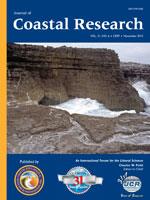Hartwell, S.I. and Fukuyama, A.K., 2015. The effects of sieve size on benthic community composition analysis.
Sediment samples were collected from the deep portion of Kachemak Bay, Alaska, for chemical analysis, toxicity testing, and infaunal community assessment as part of a larger Cook Inlet project. The benthos samples were sieved through nested 1.0- and 0.5-mm screens to allow a comparison of the relative efficacy of the two techniques. The community was highly diverse at all sampled locations (Shannon-Weiner Index > 3). Abundance was dominated by a relatively small number of species. A significantly higher number of individuals and species were retained on the 0.5-mm screen. Sieving the benthic organisms with a 1.0-mm sieve introduced biases in the data relative to the 0.5-mm screen, including calculations such as diversity and other parameters such as feeding guild distributions and benthic indices. Using a 0.5-mm mesh sieve did increase sample analysis costs and resulted in a larger number of individual organisms that were not identified to species.





